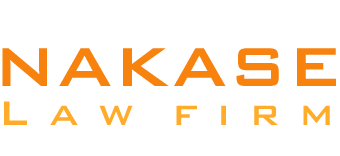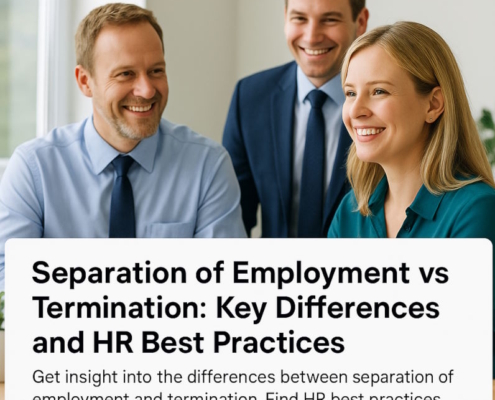Introduction
In addition to being an essential commercial function, maintaining accurate and well-organized personnel records is also a necessary legal safeguard. Errors in HR compliance can cost companies a fortune in fines and legal fees. In the most recent instance, two professional staffing companies were ordered to reimburse misclassified employees $2.4 million in damages and back pay.
Incomplete data and fragmented systems can cause HR issues, besides being detrimental to your company’s financial performance. Personnel files, often known as employee records, constitute essential records that detail the employee’s path. Not keeping personnel records puts you in a difficult position if somebody wants to evaluate a previous policy or event, and restricts your capacity to create an evidence-based personnel strategy. This is why understanding the details of “How long do you have to keep payroll records?” becomes crucial for both legal compliance and efficient personnel management.
Your most important questions concerning employee record management will be addressed in this post, including how to:
- Keep and preserve employee records
- Remain in compliance
- Manage audits of employee records
- Safeguard employee information
- Disposing of employee records
Continue reading to find out how to maintain accurate, current, and compliant employee records. It will help you concentrate on people’s work rather than paperwork.
What is the ideal retention period for employee files?
The type of documentation and your local and state regulations will determine how long you must keep personnel records on file. In accordance with the majority of laws pertaining to employee records, many employers maintain employee documents for a period of seven years.
But some records, like OSHA’s hazardous exposure reports, need to be preserved for a lot longer than 7 years. It is critical to confirm certain criteria before getting rid of any employee data.
By consulting your legal advisor, you must go through your recordkeeping procedures to make sure you are following all applicable/relevant laws. Here are some helpful guidelines to get you going.
1. Personnel files for employees: More than two years
Generally speaking, you should retain all general staff records for a minimum of two years. Most legal requirements should be covered by this, and it will also keep you ready for any questions regarding your employment practices.
Either of the following papers may be included in employee personnel files:
Hiring & applicant tracking papers
-
- Job description
- Cover letter and job application
- Pre-employment evaluations
- Interview notes
- Background check
- References
Personal data of employees
-
- Name
- Address
- Contact information
- SSN
- Any document having the signature of the employee
Onboarding documents
-
- Letter of offer
- Noncompete clauses
- Orientation checklists
- Receipt of the employee handbook
Performance records
-
- Performance evaluations
- Completed trainings
- Pay rates & changes
- Titles, position changes, or promotions
- Leaves of absence
- Disciplinary actions and complaints
- Transfers
- Layoff or dismissal information
Except when state law specifies otherwise, make sure you retain every hiring record. It includes resumes, interview notes, drug test outcomes, and any other papers pertaining to the hiring choices, for a minimum of one year following the hiring decision. This year-long timeframe doesn’t begin until the letter of offer has been received and the choice to hire is formally made.
It will be easier for your company to demonstrate that your hiring procedure is impartial and equitable if you keep employee hiring documents.
Similar to this, performance and disciplinary records ought to be preserved for a minimum of two years following the date of dismissal in order to be accessible in the event of a lawsuit or unemployment claim.
Understanding “How long do you have to keep payroll records?” like these helps defend hiring practices and mitigate litigation risks.
2. Documentation for employment eligibility: Three or more years
A worker’s Form I-9 should be retained by your organization for a minimum of one year following termination or for three years following the employee’s hiring date, whichever comes first. US Citizenship & Immigration Services is the source of these regulations; they provide a helpful calculator on their official website to assist you in determining the required retention period for certain personnel records.
It is advised that Form I-9 files should be stored separately from the standard personnel files because they have EEOC-protected personal information, e.g., age and national origin. In this way, you will be able to get documentation of employment eligibility faster when requested for a compliance audit for anti-discrimination regulations.
3. Materials connected to Family and Medical Leave Act: 3+ years
You should keep precise records to prove that you were compliant with the law. It should be done whenever an employee takes their FMLA leave, commonly referred to as family or medical leave. Even in cases of your business deciding to deny a worker’s request to take FMLA leave, the management needs to begin recording pertinent information as soon as the individual makes a request.
Employers are required by the FMLA to retain any relevant records for a minimum of three years. Among these records are:
- Payroll information
- Identifying employee information
- Period of FMLA leave, along with hours if the leave is shorter than a day (the absence must be identified as FMLA leave on the record).
- The employee’s notice of leave
- Employer’s notice of eligibility
- Documentation of the company’s leave policy for employees
- Records of premium payments for employee perks
- Records of any disagreements about claims for FMLA leave
Make sure that all the medical records of the employee or any family member related to the FMLA stay confidential and separate from their usual working records. You should also address your legal team to ensure your recordkeeping is in line with pertinent privacy regulations, such as those in the Americans with Disabilities Act and the Genetic Information Nondiscrimination Act.
4. Records of payroll and taxes: Four years
It can be a little confusing to keep track of both tax and payroll records. Payroll is the subject of numerous documents and regulations. Here are some basic guidelines to get you started, but it’s preferable to stay on the side of safety and consult an expert regarding how long to store employee records related to pay. When asking: “How long do you have to keep payroll records?” this four-year rule is your baseline.
Employers are required by the IRS to keep employment tax documents for a minimum of four years. This will guarantee that you’re ready for any information demands or audits. These tax documents that are kept should consist of:
- The EIN, or employment identification number
- Dates and amounts of all pension, annuity, and wage payments
- Records of payments for compensated sick leave
- Recording all employee-reported tips and keeping track of tips given out
- A list of all in-kind compensation paid, along with its market value
- Documentation of employee expenditure reimbursements and fringe perks
- All employees’ names, Social Security numbers, dates of jobs, and occupations
- Copies of Form W-4s for each employee
- Any Form W-2 documents belonging to employees that have been marked as undeliverable
- Tax deposit documentation
- Copies of tax returns that have been filed
- Proof of all requested tax credits in writing
Furthermore, companies must maintain the following payroll-linked employment records for a minimum of three years in accordance with the Fair Labor Standards Act:
- Every paycheck document
- Agreements for collective bargaining
- Purchase and sales records
Additionally, the FLSA requires employers to keep all wage computation records for a minimum of two years, including:
- Timesheets
- Tickets for piecework
- Tables of wage rates
- Schedules for work and time
- Documentation of wage additions and deductions
5. Records of Benefits: More than six years
Employee records pertaining to retirement plans, including fiduciary plan records, agreements and contracts, participant notices, and compliance documents, must be retained by organizations for the duration of an employee’s enrollment and a minimum of six years following the filing of the latest retirement plan document (Form 5500), as mandated by the Employee Retirement Income Security Act.
Apart from these retirement plan restrictions, the EEOC mandates that businesses keep a record of every worker’s benefit plan (like health insurance) for as long as the plan is in effect and for a full year following its termination.
Knowing “How long do you have to keep payroll records?” can also help you avoid penalties.
6. Medical records: More than 30 years
Employers should take special care to ensure that employee medical records are stored and retained properly. In addition to being pertinent to a variety of legal issues, medical records may also be subject to OSHA’s requirements that employers maintain some personnel medical records for a minimum of 30 years.
Medical records for employees and other documents pertaining to their health include:
- Medical examinations or employee physicals
- Requests for leaves of absence due to illness
- Workplace accommodations or limitations related to medical conditions
- Reports of accidents or injuries, workers’ compensation
- Any documents or suggestions signed by a doctor
- Medical data from employees that is used in research (e.g., harmful chemical exposure studies).
Keep in mind that official worker medical records are covered by the HIPAA privacy law, unlike regular staff records that could contain health information that the worker has revealed. To safeguard employees’ private information, make sure all medical records are kept safely and apart from other personnel files.
How to keep and preserve personnel files
It’s one thing to know which personnel data you must preserve and for how long, but how can you keep them accurate, safe, and well-organized? Here is a summary of the three most common approaches to maintaining personnel records.
1. HRIS is the best choice
Cloud-based databases for workers are chosen by numerous HR professionals for a reason. A human resource information system, or HRIS, gives you the ability to access all your staff records in a single secure place.
You will have a way to reduce the hassle of using spreadsheets, many systems, or hardcopy files, since things are much easier to organize. All the records you need are within a few clicks.
Also, a good people strategy is something that you can gradually develop with the help of all that personnel data and the assistance of advanced levels of reporting and analytics.
When choosing an HRIS, look at a platform that is feature-rich and easy to use and that integrates all of your technology in the HR area, your payroll, benefits administration, time tracking, and performance monitoring.
2. Spreadsheets
Spreadsheets could appear like a desirable solution for managing personnel records in smaller businesses. Spreadsheet software can be a straightforward, approachable choice for your staff and may be less expensive than an HRIS. However, you might need to update as your business expands and your documentation becomes more intricate.
Spreadsheets can easily become unmanageable, becoming an unintelligible network of tiny cells that makes it impossible to locate information. Spreadsheets can also pose security and compliance issues because, even with password protection, sensitive employee data frequently needs an additional layer of cybersecurity.
Moving your records onto an HRIS that was created with employee data regulations in mind is the best way to guarantee data security and that your company complies with recordkeeping rules.
3. Records in physical form
Even while using HRIS is the best choice for maintaining accurate, safe, and easily available records, there are still circumstances in which businesses may choose to use hardcopy files. For instance, you might still be in charge of keeping older physical personnel records if your company was founded before digital filing became a possibility.
This might also apply to small businesses or sole proprietorships that switched to an HRIS subsequently in their existence. Or, depending on your company’s structure, hardcopy files can just be the ideal choice for the workplace or the level of technology proficiency of your staff.
Having said that, digitizing your physical personnel files is a smart move. Paper documents require a lot of room to be stored securely, and there is a higher chance that files may be misplaced or destroyed. You can prevent the need to travel to a dusty store cellar and maintain employee records’ safety and accessibility by taking the effort to scan documents onto your machines and upload them to an HRIS.
After digitizing your physical documents, you can either use a paper shredder to properly discard them or keep the hard copies if your company needs them.
How to safeguard the security and accessibility of employee data
Your financial line, employee trust, and consumer trust are all severely impacted by a data breach. Make sure your company and your HRIS vendor use data protection techniques, including defense-in-depth tactics, zero trust architecture, & SOC-2 compliance, because prevention is always the best defense.
Generally speaking, only those with a valid business need should have access to personnel records within your company. Employees who possess access to staff records should receive training on the laws pertaining to data security, protected characteristics, and employee privacy.
How to respond to audits and demands for employee records
Businesses should be prepared in case the government asks for or audits corporate files, or if an employee wants access to their personnel data. You should be ready for an inspection or records demand as long as your company maintains employee records safely and in accordance with all applicable federal and state laws.
HR managers should collaborate with the legal counsel present in your company by developing a procedure that can be followed when requested to release employee records. You should have a plan ready to make sure that you will be ahead of any compliance problems and have also saved time.
You can also be proactive by regularly undertaking an internal audit of personnel records, where you would consider any red flags in relation to compliance, such as completeness, accuracy, and security.
If you ever ask yourself again, “How long do you have to keep payroll records?” consider an internal compliance audit to identify and fix potential gaps.
How to get rid of personnel documents
HR managers must have a procedure in place for getting rid of personnel records that aren’t needed anymore. It may be possible to safely keep personnel records for an extended period of time with a digital system like an HRIS.
Employee records may need to be disposed of after the legally mandated retention period has passed, though, if you’re working with physical documents, scant digital storage capacity, or extremely sensitive data.
Employee records should be disposed of by being destroyed in a way that makes them impossible to reconstruct. This not only keeps you in line with privacy regulations, but it’s also a smart way to safeguard the data of your business.
Examples of appropriate disposal methods for employee records include the following:
- Burning
- Shredding
- Hard drive destruction involves physically shattering hard drives into numerous tiny fragments.
- Erasing files digitally (using a technique that makes the file unrecoverable)
A cybersecurity expert can provide guidance on how to appropriately erase a digital record.
Since employee records management is typically a means to an end, it can be easy to ignore. However, a firm can be ruined overnight by the risks and expenses of data breaches and compliance errors! With the risks being so high, meticulous employee data storage, protection, organization, and elimination is non-negotiable.































